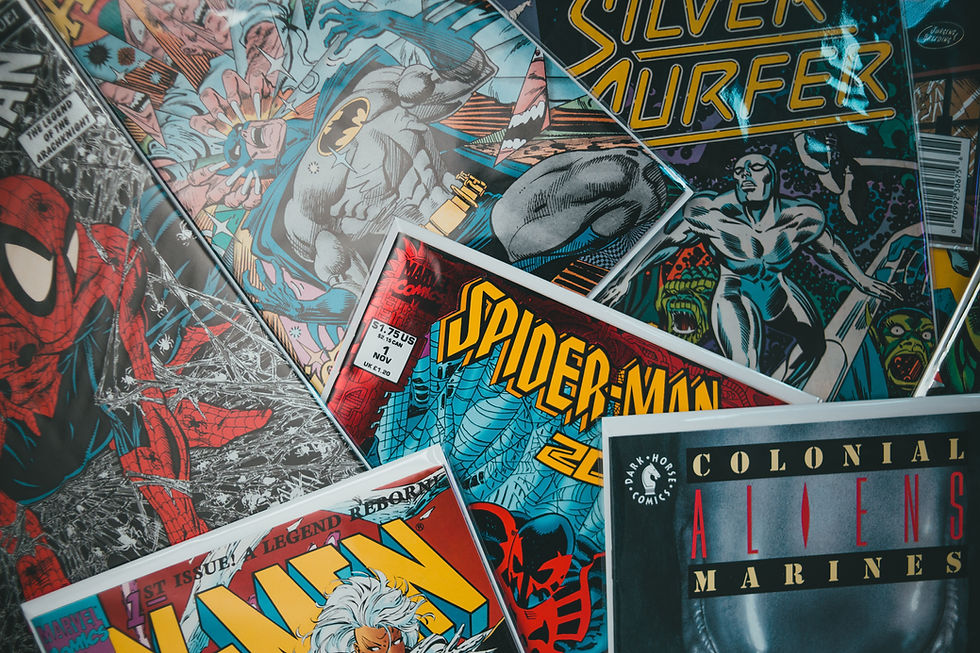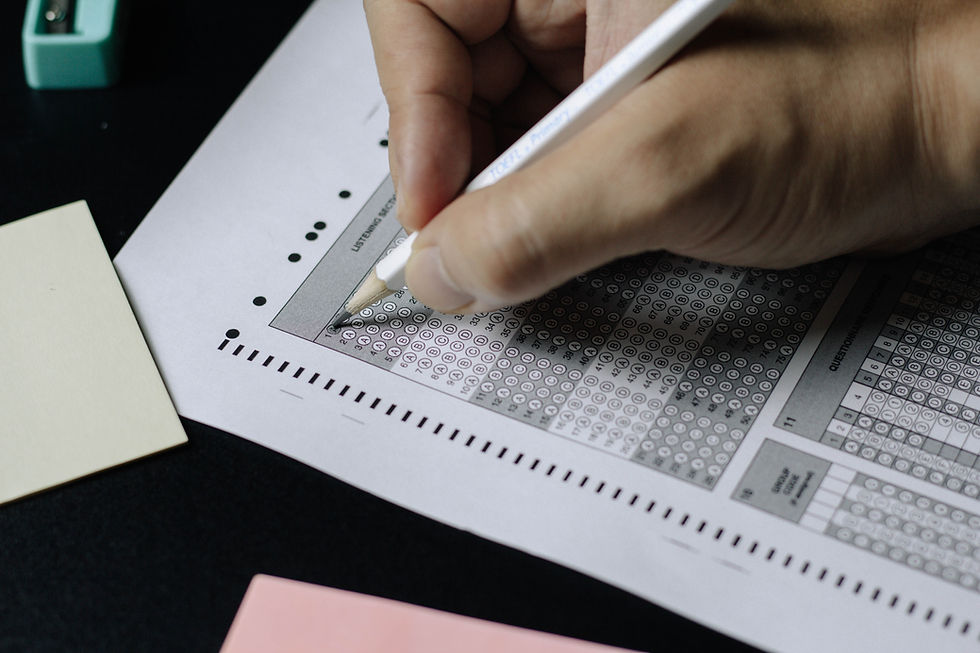I WATCH THEREFORE I LEARN
- ELT Action

- Jul 8, 2021
- 7 min read
Why should we press the “play button” more frequently?

Back in the eighties, and until 1990, in Greece, there were only two publicly run TV - channels. Children did not have many options for entertainment when it came down to kid’s programs or animated cartoons. Time and day limitations were also prevalent; you could only watch these programs either on a Saturday/Sunday morning or on every weekday. Actually, the weekday fun was one 30-minute program, broadcasted sharply at 17.00 and only from the second state TV station.
I clearly remember that one of my first cartoons, which I used to watch when I was 8 years old was the “Pink Panther Show”. To this day, even though I gloriously turned 48, I still remember my favorite scenes. One scene is with the Pink Panther trying to cross an empty street but every time he tries to put his foot on the asphalt, the street becomes full of rushing cars. In another scene, the Pink Panther gets inside a washing machine because he thinks the launderette can give him a proper bath and top to toe cleansing. However, he comes out as a fluffy entity that rises up and flies across the ceiling. Forty years have passed since these moments of me watching and I can still remember both scenes in detail. Funnily enough, I can’t remember so vividly, many other similar pictures, scenes, images, or pictorial representations I have been exposed to...I simply can’t remember. The Pink Panther scenes, though, yes!
When I was a teenager, I was extremely lucky to be the firstborn in one of the few families in my city, who could afford to buy a video VHS player. Back in 1983 that was like having a high-end tech robot in the house! During the summer holidays, there were endless hours to be killed and practically not many things to do. But the advent of VHS brought a new meaning to our boring summer holiday, for both me and my sister. We were recording Greek movies that we were watching literally either once per day or sometimes twice per day. I can assure you that almost 30 years after this repetitive watching of movies, there are at least five different Greek movies of around 100-minute duration each, that I can recite, know by heart, act out and remember every single line from them. My confirmation for this is that even today when I come across these movies with my children watching in front of the TV set, I can spoil for them the next line of the actor...In the beginning, they used to find it funny but now I am being bullied for even thinking of giving any spoilers. Irrespective of this, it’s so remarkable that I know all these scripts by heart without ever reading them! They seem to be imprinted in my memory forever, simply by watching a video 30 years ago! Of course, someone may claim that this “learning” occurred after watching all these programs so many times but...honestly who cares…? While I was watching them, back then, I was really having enormous fun.
January 2021. I am “COVID-Quarantined” and “NETFLIX-washed”, as is half of the planet. I am not complaining at all. On the contrary, I am a very big series and movie aficionado. But there was that day that I couldn’t find anything to watch. I was endlessly, boringly browsing through the options when I came across the documentary series “The Greatest Events of WWII in Colour”. I must mention here that I am also passionate about history but...on a Saturday night, affected by Netflix choice fatigue, bored to death and with a glass of wine in my hands...I really don’t know why I pressed the “play button”. And then...a series of small miracles started happening. I was so engrossed by the content of the series that I watched all the 10 episodes of it in 3 days. [By the way, this is an amazing series and really highly recommended, if you love history and want to find out more about the Second World War]. But the purpose of this article is not to promote Netflix but the second miracle that happened in the following days.
I could remember and narrate in enormous detail, what exactly “Blitzkrieg” was and how and when it took place. I could remember that an American spy ship did detect a Japanese boat very close to Pearl Harbour just a few hours before the fatal attack but nobody believed its message. I could remember Joseph Rocephort who intercepted and decoded a message from the Japanese preparing to attack Midway but nobody in the Pentagon believed him. And I could remember that the Germans completely destroyed Stalingrad but this exact action made it very difficult for them to conquer the city because the Russians could use all the rubble and debris as coverage for a guerrilla war.
To cut a long story short, for days I could lecture my colleagues with narratives, facts, historical figures that all came from this series. Information that all came from these videos! I have never opened a single book about these events but I could reproduce them, by heart, and analyze them (also sometimes “showing off”) with details in front of the astonished faces of my colleagues, who thought that I am a history expert. No preparation was ever given for these “impromptu presentations”, not even a conscious effort to construct them. I was really eloquent because I could remember everything very well. It was like these events were imprinted on my mind. And I can assure you that back then I was neither a prodigy nor I am a “memory superman” now!
Obviously, some of you may already be thinking; “Who cares?” and you may be right because for many years I also couldn’t care less. But out of curiosity and surprise I empirically managed to detect three major patterns in my aforementioned stories:
● The delivery of all these pieces of information was done to me via animated content.
● The effectiveness of this delivery was exactly the same no matter if I were 8 or 48 years old.
● In all the circumstances that learning occurred, my brain was completely relaxed, undistracted and craving to watch something I really loved.
Trying to understand why an animated event can be so compelling in terms of memory, we may want to retrieve the pretty old, but very dominant concept, of the “pictorial superiority effect”. An idea that has been confirmed and verified by the scientific community many years ago. Snodgrass and Asiaghi clarify that” the pictorial superiority effect in recognition memory is attributable primarily to the superiority of pictures in establishing conceptual memory codes…”. In other words, pictures convey more comprehensible input for our brains compared to any other text or verbal input.
Wondering why the more I grow up this function is not withered, I came across another journal by Whitehouse, Maybery and Durkin which clearly stated that “the magnitude of the picture superiority effect increased with age…”. According to John Medina, the idea is “Olympian” and it has been proved through a multitude of experiments since even 100 years ago. People remember much better when they see pictures, no matter how old they are!
Actually, this is such a natural function for our brains that when we see letters and written words, we initially think of them as pictures. You may be a voracious, avid reader, you may have trained your brain to immediately decode the meaning of each word but this does not remove the natural capacity of the brain to react primarily to the pictorial representation of the letters/words and secondary (after a lot of training) to their meaning. It is a simple natural function that will continue forever and ever and it is good for us to realize it and know about it. And maybe this function explains why we usually have a tendency to automatically visualize whatever we read. As George Bernand Shaw used to say “Words are only postage stamps delivering the object for you to unwrap” ...Now neuroscience comes to back up this theory.
And if you ever wonder why this is happening...We need to close our eyes and visualize (again!) how was our life back in the Serengeti periods. That time, people would leave their homes to hunt with one single motto: “Either you bring lunch back home or you become lunch yourself”! The threats were so many and ...they were all moving threats. Wild animals, poisonous insects, hissing dangerous serpents were also in the search for “a meal”. Consequently, we have been trained, for ages, to detect and pay attention to moving objects. According to Medina again this function has elaborated so much that ... “we even have specialized regions to distinguish when our eyes are moving versus when our world is moving.” Our brain can even override eye movement in favor of movement detected in the environment. When it comes to “movement” we are extremely highly perceptive!
The famous phrase by Tony Robbins “Energy flows where attention goes” epitomizes why animation can lure the brain into a “learning adventure”. Our brains are constantly naturally scanning for something to attract their attention. This is a natural human process and a very complicated one. Imagine “the brain” going to an open market and listening to all the vendors yelling and promoting their products. “The brain will buy” from the most “convincing vendor”. “The vendors” are the stimuli. Animated pictorial stimuli have even three times more possibilities to attract the attention of the brain, relax it and pave the way for knowledge to enter it and sink in. And if someone claims that this is not always the case, I will definitely agree but I will also remind you something THAT HAS ALWAYS BEEN THE CASE: a distracted, uninterested brain will NEVER learn. And maybe animation can help us towards establishing this needed attention and relaxation.
To conclude, you may want to enrich your PowerPoint presentations with more pictures, include more animated videos in your lectures and use as many visual stimuli as possible. They don’t have to be sophisticated or advanced. A simple drawing is enough to activate the “pictorial superiority effect” inside your students’ brains. Multi-modality can also be a very rich context to enhance any learning techniques based on videos or general animation and maybe that is why it has already been established as the “5th skill”! I think we should all be seriously thinking of pushing the “play button” in our video media player more often!

George Kokolas is an academic manager, coach, trainer, international speaker, presenter, positive psychology practitioner, podcaster and radio producer. He also loves movies, theatre, tv series, sports and his family. He leads his life trying to combine all those effectively and stay happy.
BIBLIOGRAPHY
John Medina, Brain Rules, Pear Press, Seattle, 2014
Whitehouse, A. J. O., Maybery, M., & Durkin, K. A. (2006). The development of the picture superiority effect. British Journal of Developmental Psychology, 24(4), 767-773. https://doi.org/10.1348/026151005X74153
Joan Gay Snodgrass, Antony Asiaghi, The Pictorial Superiority Effect in Recognition Memory, Bulletin of tile Ps), economic Society 1977, Vol. 10 (1). 1-4, New York
Where focus goes, energy flows
https://www.tonyrobbins.com/career-business/where-focus-goes-energy-flows/
Picture by: 'https://www.freepik.com/vectors/man'>Man vector created by macrovector - www.freepik.com</a
First published for EP Teachers’ Corner. Original source here:




Comments